Archive Entries for September 2018
« August 2018 | Main | October 2018 »
Sunday September 30, 2018
Books in September
-
Northanger Abbey by Val McDermid [Read by Jane Collingwood]
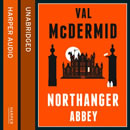 The first thing to say about this book is that it is a modern re-imagining of the Jane Austen classic novel. I feel I have to mention this as Amazon have royally messed up their page links on this book which has led to people downloading it expecting the original - their comments remind me of an extract from Waugh's novel Scoop (see below*).
The first thing to say about this book is that it is a modern re-imagining of the Jane Austen classic novel. I feel I have to mention this as Amazon have royally messed up their page links on this book which has led to people downloading it expecting the original - their comments remind me of an extract from Waugh's novel Scoop (see below*).
Anyway if you had the right expectation you will enjoy this book well enough. It is the second book in The Austen Project where six contemporary authors would reinterpret her books in a modern context; (it seems to have got no further than 4 - there were no takers to write Persuasion and Mansfield Park - and the existing 4 have been fairly roundly criticized). For me, strangely, they adapt moderately well to this treatment, with email and texts keeping up the stream of communication evident in Austen's novels. The social whirl that is Bath is replaced by the environment of the Edinburgh Book Festival and the rich hosts for seventeen-year-old Cat Morland are obsessed by shopping, and the Fringe. The 17th century balls are replaced by a highland dance and the duplicity of Cat's BFF and her brother are all as they ever have been in history (as far back as the Stone Age I suspect). It all works very well - but then keeping in line with the misunderstandings and social expectations in manners and romance make it a bit more difficult to provide a modern parallel. Anyway the result is good and I would recommend it whether you like Austen or not.
If you are interested in this Project idea then you might look at A Cure for All Diseases, where Reginald Hill adapted Austen's unfinished novel Sanditon in this way.
* Gratuitous extract from Scoop:
[As as author of Lush Places for the Beast newspaper], William had composed a lyrical but wholly accurate account of the habits of the badger; one of his more finished essays. Priscilla in a playful mood had found the manuscript, and altered it, substituting for 'badger' throughout 'the great crested grebe'. ...
...His mail had been prodigious; some correspondents were sceptical, others derisive; one lady wrote to ask whether she read him aright in thinking he condoned the practice of baiting these rare and beautiful birds with terriers and deliberately destroying their earthly homes; how could this be tolerated in the so-called twentieth century? A Major in Wales challenged him categorically to produce a single authenticated case of a great crested grebe attacking young rabbits... -
Girl on Fire by Tony Parsons [Read by Colin Mace]
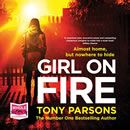 The criminal part of the plot here begins with a graphically described terrorist attack on shopping centre. This is harrowing enough, but DC Max Wolfe is also suffering as his wife has decided to take their daughter back into a "more suitable family environment". In true form, Max puts the poor kid's welfare first, hiding his personal turmoil, and luckily she seems to survive what the adults put her through.
The criminal part of the plot here begins with a graphically described terrorist attack on shopping centre. This is harrowing enough, but DC Max Wolfe is also suffering as his wife has decided to take their daughter back into a "more suitable family environment". In true form, Max puts the poor kid's welfare first, hiding his personal turmoil, and luckily she seems to survive what the adults put her through.
Finally - get out your hankies, that's all I can say. As I observed after the last book: DC Wolfe was always destined to to be a tragic hero. -
The Floating Admiral by the Detection Club [Read by David Timson]
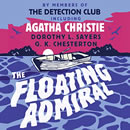 This is an intriguing novel. And if it did not have such an interesting history would be a bit less interesting, seeming a bit muddled, going on and off the boil, and - of course - being very dated.
This is an intriguing novel. And if it did not have such an interesting history would be a bit less interesting, seeming a bit muddled, going on and off the boil, and - of course - being very dated.
It's a collaborative detective novel written by fourteen members of the 'Detection Club' in 1931. Each author would write one chapter, leaving G.K. Chesterton to write the prologue and Anthony Berkeley to tie up all the loose ends. In addition, each of the authors provided their own solution in a sealed envelope, all of which appeared at the end of the book. [Agatha Christie's ingenious conclusion acknowledged at the time to be 'enough to make the book worth buying on its own']. I have to say, that I do like the idea of these collaborations - like the Medieval Murderers - but I also have to say that I think a collection of short stories works better, for obvious reasons.
- Prologue: The Three Pipe Dreams - GK Chesterton
- Chapter 1 Corpse Ahoy! - Victor Whitchurch
- Chapter 2: Breaking the News - GDH and M Cole
- Chapter 3: Bright Thoughts on Tides - Henry Wade
- Chapter 4: Mainly Conversation - Agatha Christie
- Chapter 5: Inspector Rudge Begins to Form a Theory - John Rhode
- Chapter 6: Inspector Rudge Thinks Better Of It - Milward Kennedy
- Chapter 7: Shocks for the Inspector - Dorothy L. Sayers
- Chapter 8: Thirty Nine Articles of Doubt - Ronald Knox
- Chapter 9: A Visitor in the Night - Freeman Wills Croft
- Chapter 10: The Bathroom Basin - Edgar Jepson
- Chapter 11: At the Vicarage - Clemence Dane
- Chapter 12: Clearing Up The Mess - Anthony Berkeley
- Appendix - Solutions
Here's a very good podcast about the book, with a transcript if you prefer. -
House of Beauty by Melba Escobar
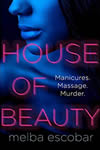
... or La Casa de la Belleza as we folk with pretensions of reading stuff in the original language might say.
The action revolves around a beauty salon catering to the well-heeled in a rich area of Bogotá. There's corruption, poverty, murder, and injustice. This is a suitable synopsis: ..it's the same the whole world over, it's the poor wot gets the blame; it's the rich wot gets the pleasure, isn't it a blooming shame?
I enjoyed reading this book as it's not one I would of normally gone for - even though it is a psychological novel about crime. I see some readers were not so happy but as far as I can see they mostly complained that the plot was lengthy and too complicated with too many characters to follow, and the translation from Spanish was poor. I didn't have a problem with that, and felt I was being given real insight into a place I know nothing about - and wondered if it bore as much relation to crime in Bogotá as Morse does to Oxford (see below). However I was glad to read a comment from someone who seems to know: ...if you have ever spent time in Bogotá, this book will make you nostalgic: the sense of place is beautifully drawn, even if you have little fondness for the actual city... -
The Chalk Man by C J Tudor
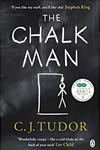
This is a rather creepy psychological thriller based around a childhood secret or memory - so some 1980s flashbacks thrown in, (which are not quite so nostalgic for me as that was not my childhood).
It's criticised for improbable plot twists - but then that's what stories are all about after all. In fact, how realistic are any detective novels? [For example: the much loved Morse who had more murders in one episode than the Oxford constabulary ever saw in a year]. -
The Hound Of Death by Agatha Christie
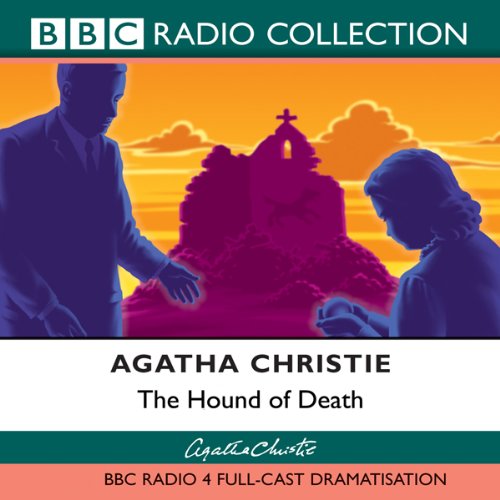 An ambitious doctor meets a nun apparently traumatised by what she witnessed in the Great War. An attempt to restore the woman's sanity results in the uncovering of something very sinister indeed.
An ambitious doctor meets a nun apparently traumatised by what she witnessed in the Great War. An attempt to restore the woman's sanity results in the uncovering of something very sinister indeed.
This is a BBC 2002 radio play dramatised by Bill Morrison and directed by Dirk Maggs. It's an adaptation a short story by Agatha Christie set in 1920. Cast includes Julia McKenzie as Alice Anstruther and Michael Kitchen as Dr Rose plus Simon Treves, Marianne Borgo and Alexis Zegerman.
Posted on September 30, 2018 at 7:35 PM. Category: Books of the Month.
Thursday September 20, 2018
Globe

Alison took me to the Globe! I was so excited as I have never been before.
It was magical - open to a darkening sky. You can see we had the posh seats under cover...
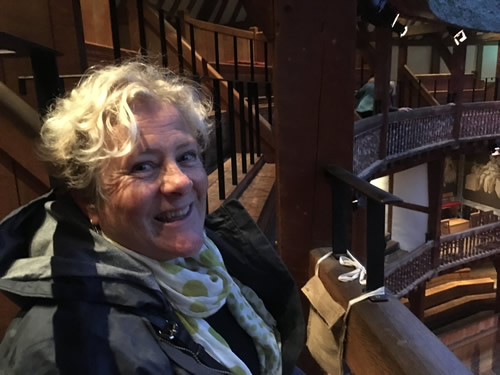
The play is about Eyam - the "plague village" **. When a case of plague was found in 1665, the villagers took the amazingly altruistic decision to seal themselves off from the surrounding areas to prevent the disease spreading. This protected others but also sealed their fates. At the end of the play, Sam Crane solemnly recites the names of the 273 villagers who lost their lives to the plague; it was a bit of a party trick, but actually very moving, dozens of shared surnames are listed one by one.
Below you can see the set with a model of the village, and some of the audience, full of anticipation, in the pit.

It's a predictably glum play, and my only other point of note was that (rather oddly I thought) Annette Badland appeared in a male role as the Reverend Stanley. I think may be next time - a Shakespeare comedy. I always wanted to see a Midsummer Night's Dream on Midsummer's Night. Perhaps now the Tube runs at night, I might one day get to do that.
[** with the subsequent turn of events in 2020, I have since seen a great deal of dramas and documentaries about these determined and self-sacrificing villagers.]
Posted on September 20, 2018 at 11:18 AM. Category: Art and Culture.
Friday September 14, 2018
Frelons Asiatique
This isn't so much a pretentious title for the entry as an indication that I had to go to the dictionary and the web to find our how to report to the local Mairie that Asian hornets have moved into the roof space in our new conservatory. Even then he had to check to see if it were true (ie really Asian and not just European).
So we had a visit from the man himself at our humble property, closely followed by exterminators. The Mayor told us that they have already had 6 reports of them in the locality this year.
I was surprised at how easy it was to see they were not "normal" hornets - the difference in general appearance was obvious even at a distance - having had plenty of opportunity to observe the normal ones nesting in our chimney and ceiling in the bakehouse. Any closer views and the predominantly blacker markings are all too obvious.
If you want to frighten yourself, go look on the internet for the differences. However, don't mistake the loose terminology - this is not the "giant" Asian hornet - in fact, these hornets are smaller than European ones, they are not active at night (so I'm not in danger of finding them swarming around the light at the front door at night), and their sting is apparently not as fierce (not something I plan to test). They are reportable in France and in the UK as they actively destroy bees and hives - as if they did not have enough to contend with.
Posted on September 14, 2018 at 8:47 PM. Category: France.
